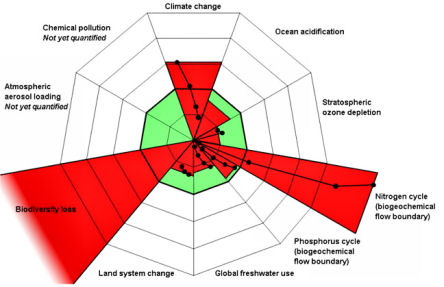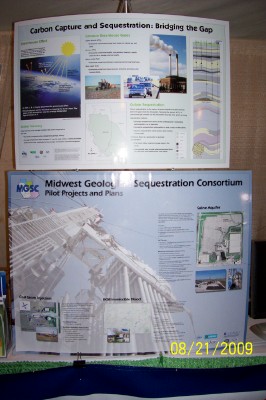I don’t run much about Peak Oil. Don’t get me wrong. I read their best web postings and sometimes I even publish some of the stuff they report on.
I rarely ever post stuff directly from the “Peak Oil” perspective for the same reasons that I do not post “end of days” stuff. They are BOTH true. That is OIL will run out and the Earth will come to an end but the predictiveness is problematic to say the least. For sure Peak Oil will come true before Peak Days, till either happens though…well the less said the better. They are having a conference in Denver and I thought I would post a couple of pieces so it doesn’t seem like I don’t like them.
Is there such a thing as Peak Sex? Well think about it (:)) there IS only so much that you can have.
http://www.energybulletin.net/node/50359
9 Oct 2009
Whither Resilience and Transition? Why ‘Peak Oil’ Has Yet to Outlive its Usefulness
It’s been a fascinating few days. Early in the week, Nate Hagens and Sharon Astyk were suggesting the perhaps the term ‘peak oil’ has outlived its usefulness, given that we have almost certainly peaked, and that the peak oil movement needs to shift its focus. It echoed something I wrote a while ago, likening ASPO and the wider peak oil movement to a Loch Ness Monster Society, dedicated to establishing the existence of this fabled creature. They organise conferences, scientific searches of the loch, write papers and journals, and then one day, an entire, intact Loch Ness Monster washes up on the shore. Then what? They have no reason to exist any longer, their whole raison d’etre vanishes overnight.
However, I don’t think it is that straightforward. For me, what we are seeing, taking a step back and looking in the longer time context, is a series of pulses. Peak oil won’t go away as an issue, it pulses in and out of the collective consciousness and hopefully will increasingly come to underpin Government policy-making. In July 2008, peak oil was pulsing as the oil price hit record highs, and issues around economics were in the background. Now, economics has been the key pulse for the last year or so, and peak oil has been pushed off the side of the stage until the last few days. If Colin Campbell’s original analysis, elaborated by David Strahan in his talk at the 2009 Transition Network conference, is correct, what looks likely is that the two will pulse alternately, as any kind of economic recovery increases demand, which raises the oil prices, which dampens economic recovery, which reduces demand and lowers prices, which increases demand, and so on and so on. Until the connection between the two becomes clear, they will continue to pulse alternately.
Over the last couple of days, the peak oil pulse has become most prominent, with two excellent reports which will hopefully give Ed Miliband a lot to think about, and dampen the complacency brought about by Malcolm Wicks’ dreadful and fairly pointless report on UK energy security. The first report, by the UKERC, the UK’s premiere research establishment, sets out to answer the question “what evidence is there to support the proposition that the global supply of ‘conventional oil’ will be constrained by physical depletion before 2030?”, via. a review of 500 published papers on the subject. Its findings are striking (you can read David Strahan’s excellent analysis of it here). It argues that there is a ’significant risk’ of conventional oil production peaking before 2020, and brands those who argue that it will come some time beyond 2030 as being ‘at best optimistic and at worst implausible’.
ellipse ellipse ellipse as they say in the citation business:
Then today, Ofgem, which regulates electricity and gas markets in the UK, publishes its Project Discovery: energy market scenarios report. It generates 4 scenarios about where energy prices might go between now and 2020, concluding that its worst case scenario means a 60% increase in energy bills. In order to be prepared for the decline in UK gas supplies, the shift to low carbon energy generation and the phasing out of nuclear plants, the UK needs to be prepared to invest £200 billion. Under all of its scenarios, fuel bills will rise, and interestingly, they note that the slower the economic recovery, the less steep the rise in prices. It is a shot across the bows of what it sees as Government’s keeping of the issue on the long finger, and failure to invest (although it does put nuclear centre stage as part of the solution).
This morning on Radio 4’s Today Programme, shadow energy secretary Greg Clark and energy analyst David Hunter discussed the implications of the Ofgem report with presenter John Humphries. It was a fascinating piece, mostly along the lines of “how has the Government let this slide for so long”, with Clark trying to make out that the Conservatives have been onto this for years, in spite of the lack of any evidence for this. When asked what the Tories’ response would be, he replied ‘clean coal’, a technology which Humphries had to point out, doesn’t actually exist yet, a phenomena Clark had tried to sidestep by describing it as ‘pre-commercial’. No talk, of course, of reducing demand, conservation, rethinking supply chains, of resilience.
:}
Righto, the Brits are so fascinating to read and watch. Kinda like watching Gold Finches feeding upside down.
While the Americans just call each other names…
http://www.thedenverdailynews.com/article.php?aID=6010
Will oil demand soon outgrow supply?Peak oil believers think so, but oil, gas companies say that theory is bogusGene Davis, DDN Staff WriterTuesday, October 13, 2009 |
A “peak oil” conference wrapping up today in Denver is sounding the alarm that oil demand will soon outgrow supply, posing a potential economic threat to the country’s economic well being.
However, most oil and gas companies say the peak oil theory is bogus and that there are plenty of the natural resource to go around.
Mayor John Hickenlooper is among the peak oil believers. The former geologist told conference attendees yesterday that it’s not a question of if the world will reach peak oil ” meaning the time of maximum oil production ” but when it will happen.
“We cannot afford to ignore the issue,” he said in a statement. “By anticipating the expected rapid changes in both supply and demand, we can begin to frame the issue not only as a challenge but also as an economic opportunity.”
But The Colorado Oil and Gas Association, for one, doesn’t think Hickenlooper’s school of thought has much credibility.
“For more than five decades, various individuals have claimed that the world had reached, or was nearing, peak oil,” said a statement from the group. “With more than 200 new oil discoveries in the last year alone, it’s safe to say that peak oil enthusiasts are every bit as wrong today as they have been for the past 50 years.”
The Association for the Study of Peak Oil and Gas has been hosting the International Peak Oil Conference at Denver’s Sheraton Hotel since Sunday. The event has featured more than 70 speakers who have talked about “energy, oil, and our future.”
David Bowden, ASPOG executive director, said that after maximum oil production is reached, the United States economy might have difficulties growing without the constant input of steady and inexpensive oil.
As a result, Bowden is urging for people to “conserve, conserve, conserve” and shy away from “our monolithic oil consumption habits.” Although the United States has around 5 percent of the world’s population, the country uses approximately 25 percent of the world’s oil supplies, largely because of automobile usage.
Bowden supports light rail projects like FasTracks instead of building more roads or expanding highways. FasTracks is a multi-billion dollar transit expansion plan to build 122 miles of new commuter rail and light rail.
“Even though FasTracks has its challenges and the system is a bit limited right now, as oil supplies tightens and the prices go up, it will be necessary,” he said.
Critics have continually slammed FasTracks for running behind schedule and over budget.
“(FasTracks) was such a faulty fiscal plan, it’s inexcusable,” said Jon Caldera of the libertarian Independence Institute earlier this year.
The recession and falling prices at the pump have taken the oil and gas issue out of the headlines. “But when the country pulls out of the recession and starts consuming more oil and growing populations in countries like China and India do the same the issue will become intensified, especially if oil production drops”, Bowden said.
“Anyone who tries to predict the timing and price of oil is engaged in a fools errand,” he said. “But we see the long-term writing on the wall.”
:}
Oh that is so BIBLICAL:
http://en.wikipedia.org/wiki/The_writing_on_the_wall
:}














